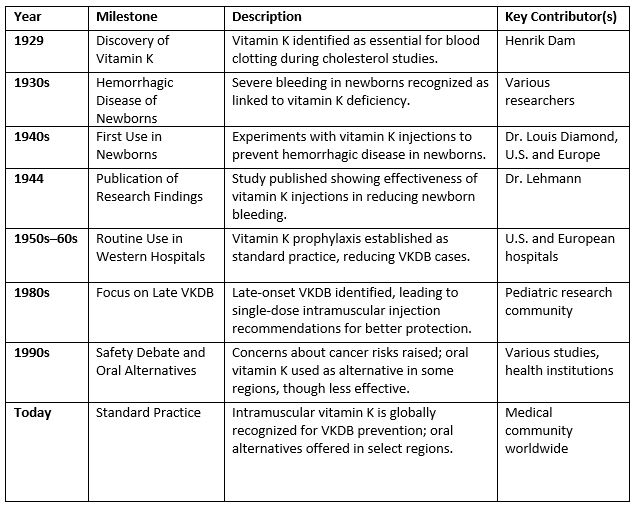Historical Perspectives
Session: Historical Perspectives
813 - The “K” Factor: Tracing Vitamin K’s Journey from Historical Roots to Modern Newborn Care
Sunday, April 27, 2025
8:30am - 10:45am HST
Publication Number: 813.6752
Ashleigh E. Aubin, Baylor Scott White McLane Children's Medical Center, Temple, TX, United States; Muppala Prasanth Raju, Baylor Scott White McLane Children's Medical Center, Temple, TX, United States; Niraj Vora, Baylor Scott White McLane Children's Medical Center, LEANDER, TX, United States; Shreya Jatla, Baylor Scott White McLane Children's Medical Center, Georgetown, TX, United States; Venkata N. Raju, Baylor Scott & White Hospitals, Coppell, TX, United States
- AA
Ashleigh E. Aubin, Medical Doctorate (she/her/hers)
Fellow
Baylor Scott White McLane Children's Medical Center
Temple, Texas, United States
Presenting Author(s)
Background: Vitamin K is essential for blood clotting, and deficiencies can cause bleeding and severe complications. Newborns are susceptible to vitamin K deficiency due to inadequate placental transfer, immature gut flora, and absorption issues. To mitigate hemorrhagic disease in newborns, vitamin K injections at birth are widely practiced.
Objective: This study explores the history, discovery, and therapeutic uses of vitamin K in neonates and increasing concern about its refusal by parents in some parts of the world.
Design/Methods: A review of historical documents and medical literature.
Results: Vitamins, derived from the Latin “vita” (life) and “amine” (containing nitrogen), were first identified in the early 20th century, beginning with Vitamin A, which enhanced bird vitality, and Vitamin B, beneficial for Beri Beri. Named alphabetically, the discovery of Vitamin K followed in 1929 by Carl Peter Henrik Dam, who found that chicks on a fat-free diet exhibited bleeding unrelated to Vitamin C deficiency. This vitamin, identified as fat-soluble, was named after the term “koagulation” in German. Vitamin K was later synthesized and introduced in medicine to address bleeding from cholestasis and prevent vitamin K deficiency bleeding (VKDB) in newborns. Henrik Dam and E.A. Doisy received Noble prize in 1943 for its discovery and description.
Newborns have an elevated risk of vitamin K deficiency due to minimal placental transfer, very low levels in breast milk compared to formula, and an immature liver function and microbiome in the gut for its synthesis, which hinder its absorption and recycling.
VKDB can present as early (within 24 hours), classic (within the first week), or late (from two weeks to six months). Given the severity of VKDB, the American Academy of Pediatrics (AAP) advocates for vitamin K prophylaxis at birth in infants exclusively breastfed. Intramuscular (IM) vitamin K is effective in reducing all VKDB types. Oral vitamin K is a partial alternative in some places of the world with various dosage regimens, the efficacy of which is not reliable.
Conclusion(s): Intramuscular Vitamin K administration at birth remains critical in VKDB prevention. It's important to educate the providers, healthcare workers and caregivers as parental refusal is on the rise.
Vitamin K discovery and chemical structure- Nobel Prize winners
.jpg)
Milestones in the discovery and use of Vitamin K in Healthcare


